Scroll through the lesson and click on notation/video/audio links to load the interactive players.
| Don Mock >> Jazz Connection >> |
|
|
Please subscribe to get full access to all lessons for only $7.95/month PLUS 1 week free trial.

Riff Interactive lessons are
LESS expensive and
MORE interactive than alternatives!
More Info
|
|
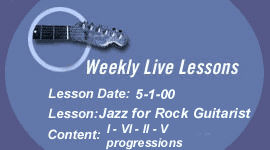
Support:
Michael Johnson is today's instructor, next Monday will be Don Mock
Michael:
yes, I'm covering jazz guitar basics tonight
Michael:
kind of a jazz guitar primer for Don's lessons
Michael:
here's an example of a I - VI - II - V progression
Michael:
or other words: 1, 6, 2, 5 progression
Michael:
notice the chords of the progression
Michael:
you also move the scales as you play
Michael:
our scale for tonight is G Major (Ionian) ...
Michael:
G, A, B, C, D, E, F#
guitarguy:
should you start in 3rd position teacher?
Michael:
yes, the tab shows the 3rd position
Chris:
ouch...s t r e t c h !!
Michael:
Chris I'll send the tab showing the fingers
Michael:
here's the same scale showing the 1, 2, 5, and 6 notes
Support:
you will see the 1, 2, 5, and 6th notes highlighted on the guitar neck when you play back the tab (if you haven't figured that out already)
Tom:
what is the trick in a good clean electric guitar "jazz" sound..neck pickup?
Michael:
yes tom that's right
Michael:
and you can roll the treble down on the tone knob
Michael:
see how the highlighted notes show the main notes of the progression?
Michael:
now for a common jazz progression you play it in this order
torr71:
are we just working major scales
Michael:
I - VI - II - V
Michael:
we'll use the modes in a minute
Michael:
can you tell me what the notes of that progression would be?
Patty:
G A D E
torr71:
g c am d
Tom:
gead
Michael:
good patty, but in the order I just showed you
Michael:
correct tom
Michael:
here's our jam track you play over
Michael:
I'll send you phrases you can practice over it
pam:
G Am D Em
Smitty:
Are the E and A minor chords in this progression?
Michael:
yes Smitty
pam:
G em am D
Michael:
basically the last progression is based on G maj7, Em7, Am7 & D9
Michael:
I'll send you the chords
torr71:
e blues scale works
Michael:
that works
Michael:
notice I subtly change the 2nd chord
Michael:
I'll send you the pictures



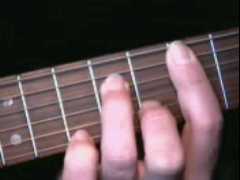

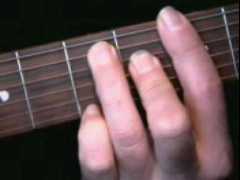
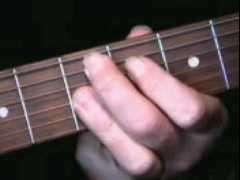
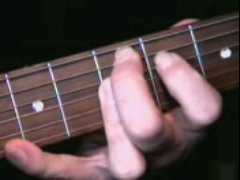
guitarguy:
teacher, in the 1st wave file, are you using the G maj scale as a solo?
Michael:
guitarguy I use the G major and a few other modes
Patty:
ugh... D9 is tough
Michael:
that one is a bit of a stretch
Michael:
ok you can play the related modes for each of the key tones of that progression
Michael:
here's the tab for each of the scale patterns
torr71:
em gmaj am
torr71:
throw in a gmaj7 arpeg...
Michael:
do you have questions on those scales
Chris:
is that GMaj7 chord using a Bar with the middle finger?
Michael:
yes Chris you barre the middle two strings witht the second finger
torr71:
one scale four modes
guitarguy:
what of scale is the d mixolydian?
Michael:
all related modes
torr71:
g maj
Michael:
the Mixolydian is the 5th mode of the G major scale
Michael:
notice all these scales consist of the same notes
Michael:
in otherwords they are "related"
fergy:
so each of these "modes" is just a different position of a scale?
Michael:
yes fergy
Michael:
ok now you can break each of these modes into triads or arpeggios
Michael:
here's an example
fergy:
it really doesn't look like any of th 5 positions I know...confusing
fergy:
5 positions of the same scale?
Michael:
it's playing the patterns on the 5th string
Michael:
but starting on a different note, which within the context of the scale pattern has a different sound or mood
Michael:
mode = mood
wg99nyr99:
i use triads to improve my speed and dexterity
Michael:
they are great exercises
Smitty:
Pretty cool how each note fits along as you play notes that are in the G scale...
Michael:
yes for each mode or scale
torr71:
pick an arpeg and run it up and dn the neck
Michael:
do you understand the formula of a triad?
Michael:
I'll send the arps next
torr71:
1 3 5
Smitty:
I III V
Michael:
do you know the pattern for an arpeggio?
Bill:
g b d
Michael:
by the way you can play the triads in rhythm
torr71:
add the f#
Michael:
here's an example
Bill:
f # to g b d is a major 7th
Michael:
here's an example of the arpeggio
Michael:
the patterns can be a challenge to some
Michael:
see how the triads, arpeggios, chords are all related to the scales
Michael:
it's a series of specific patterns
torr71:
repeat and moveable
Michael:
even the various chords voicings relate
Michael:
I'll send you some chord examples
Michael:
here's how the G maj7 chord is constructed
Bill:
G B D F#
Michael:
so you have the : G, A, B, C, D, E, F#
Michael:
the pattern is 1, 3, 5, 7 for the maj7
Michael:
now you can use the same formula with the other chords
Bill:
WHICH IS G B D F#
Michael:
yes Bill
Michael:
here's the minor scale
Tom:
this is great stuff, filling in some gaps I had in my theory!
Groy:
the lead note are played to the chords?
Michael:
yes Gory
Bill:
teacher , if you get rid of the F# note aren't you playing the C Major scale
Michael:
in theory yes, because you have no flat or sharp notes
Bill:
I thought so
Michael:
well it's time to go
Michael:
I'm glad it helps you to understand the theory better
|
<< load notation from left
|
|
<< load audio from left
|
<< load audio from left
|